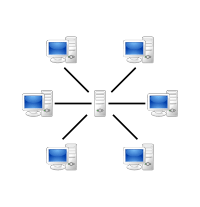
A rule to ensure that users on a network have their own unique username so that they can be owners of their own resources (such as their personal folders).
A simple and consistent naming convention for users on your network is an important part of network administration. Examples of naming conventions applied to the user Jeff Smith might include the following:
Two users on a network might have the same first or last name, so your naming convention should include a rule to break ties. For example, if Jeff Smith is “jsmith,” James Smith might be “jsmith2.” You might also want to establish a rule for easily identifying temporary employees, such as “T-jsmith” or “jsmith(temp).”
On Microsoft Windows 2000–based networks, usernames of domain user accounts must be unique within the given organizational unit (OU) in which they are created in Active Directory. Usernames can be more than 20 characters long, but only the first 20 characters are used as logon credentials.